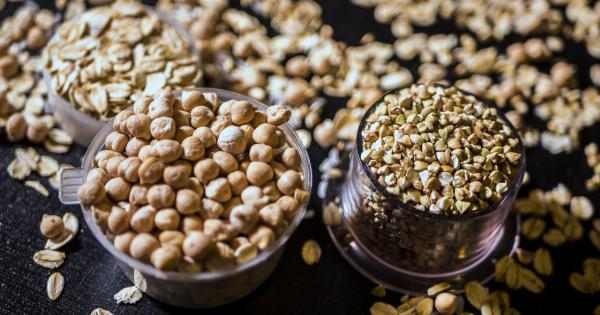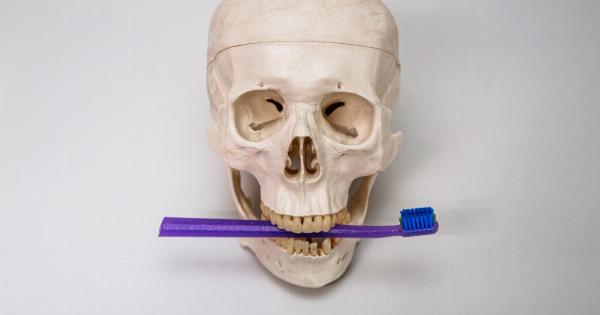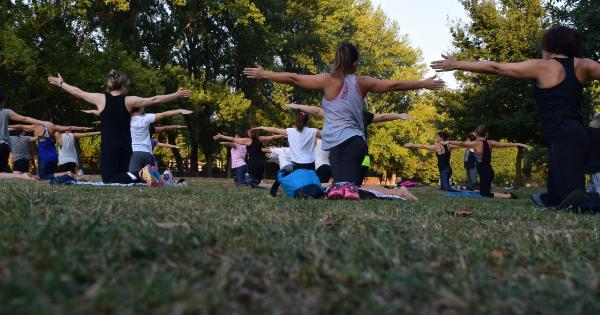Regular exercise plays a vital role in maintaining the health of our muscles and bones. One effective form of exercise that offers numerous benefits in this regard is plmatography.
Plmatography, also known as mat-based exercises, is a low-impact physical activity that focuses on developing core strength, flexibility, and balance. This article explores the various advantages of incorporating plmatography into your fitness routine for optimal musculoskeletal health.
1. Improved Muscle Strength
Plmatography targets multiple muscle groups simultaneously, resulting in a well-rounded strength training workout. By engaging in plmatography regularly, you can strengthen your core muscles, such as the abdominals, lower back, and obliques.
Additionally, plmatography also works the muscles in your arms, legs, and glutes, leading to increased overall muscular strength. Strengthening these muscles helps support the skeletal system and reduces the risk of injury.
2. Enhanced Flexibility
Flexibility is a key component of maintaining healthy muscles and bones. Plmatography involves a range of stretching exercises that promote flexibility and joint mobility.
Through consistent practice, plmatography can help lengthen muscles and tendons, improving overall flexibility. Increased flexibility can prevent muscle imbalances and enable a wider range of motion, reducing the likelihood of strains or sprains during daily activities.
3. Better Posture
Poor posture can have detrimental effects on the musculoskeletal system, leading to back pain, neck pain, and imbalances in muscle strength. Plmatography focuses on core stability and alignment, which can have a positive impact on your posture.
By strengthening the muscles that support your spine and improving overall body alignment, plmatography helps you develop better posture, reducing the risk of musculoskeletal issues caused by poor alignment.
4. Increased Bone Density
Osteoporosis is a condition characterized by low bone density, making bones fragile and prone to fractures. Regular weight-bearing exercises, such as plmatography, can help increase bone density and reduce the risk of osteoporosis.
Plmatography exercises involve bodyweight resistance, which stimulates bone growth by placing a controlled amount of stress on the bones. By incorporating plmatography into your exercise routine, you can improve bone density and maintain healthy, strong bones.
5. Joint Health
As we age, wear and tear on our joints can lead to stiffness and discomfort.
Plmatography includes low-impact exercises that are gentle on the joints, making it an ideal choice for individuals with joint issues or those who want to take a proactive approach to joint health. The controlled movements and fluid motions of plmatography help lubricate the joints, improve flexibility, and strengthen the muscles around the joints, reducing the risk of developing joint-related conditions like arthritis.
6. Stress Relief
Exercise, in general, has well-known benefits for mental health, and plmatography is no exception. Engaging in plmatography can help reduce stress levels, improve mood, and promote relaxation.
The rhythmic breathing patterns and mindful focus required during plmatography help activate the parasympathetic nervous system, leading to a decrease in stress hormones. By incorporating plmatography into your routine, you can experience the mental and emotional benefits that contribute to overall well-being.
7. Weight Management
Maintaining a healthy weight is crucial for overall musculoskeletal health. Plmatography can contribute to weight management as it helps burn calories and build lean muscle mass.
Regular plmatography sessions can increase your metabolic rate, leading to more efficient calorie burning even at rest. By combining plmatography with a balanced diet, you can achieve and maintain a healthy weight, reducing the strain on your muscles and joints.
8. Enhanced Balance and Coordination
Plmatography exercises often involve movements that challenge balance and coordination. By practicing these exercises regularly, you can improve your proprioception, which is the body’s awareness of its position in space.
Improved balance and coordination reduce the risk of falls and injuries, as well as enhance athletic performance in other activities.
9. Rehabilitation and Injury Prevention
Plmatography is a popular choice for rehabilitation purposes as it provides a low-impact and gentle exercise option. It can be particularly beneficial for individuals recovering from injuries or surgery.
The controlled movements in plmatography help restore joint function, improve muscle strength, and increase stability, promoting a faster recovery. Additionally, incorporating plmatography into your regular workout routine can also help prevent future injuries by strengthening supporting muscles and improving overall body mechanics.
10. Accessible and Versatile
One of the significant advantages of plmatography is its accessibility. It can be practiced anywhere, requiring minimal equipment.
Even if you don’t have access to a gym or specialized equipment, a simple mat is sufficient to perform a wide variety of plmatography exercises. Moreover, plmatography can be modified to suit different fitness levels and abilities, making it suitable for people of various ages and physical conditions.






























